Question
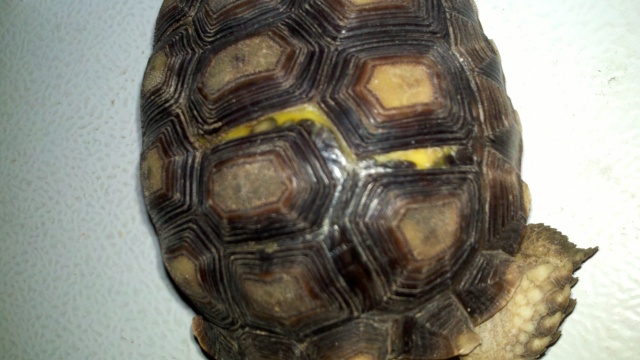 shell
shell
I found a tortoise that I believe to be a baby salcata tortoise. I didn't have a lid on its aquarium at first and the basking light fell on top of her for an unknown amount of time. She managed to dig her way out but for weeks afterwards she wouldn't eat and would barely move. I thought she was dying for sure but I somehow managed to nurse her back to health. Her behavior has been completely normal now for about two months. Shortly after this accident I started to notice a green spot on the right side just underneath the top shell. Just recently I noticed that her top shell seems to be splitting apart almost and I can see a yellowish part with black circles in between the split. Both of these problem areas are not soft nor do they have a fowl odor. I soak her about once a week and there is a sunlight basking bulb but I cant remember what wattage it is. There is sand in the bottom of the tank she likes to dig in it. There is a half log for her to hide in and a small water dish. Needless to say her aquarium now has a lid so this accident wont happen again. I recently began adding a complete balanced nutritional powder for tortoises and have been sprinkling it on her lettuce because I thought it may be due to a vitamin deficiency. I also put tortoise food pellets in her tank although I'm not sure if she ever eats them. I need to know is this shell rot? Could it have been caused by the light accident or something else? How do I go about treating both the top shell splitting problem and the green spot problem. I have pictures enclosed. Please help and thanks for your time.
AnswerHi Amber,
I applaud you for wanting to do your best for your tortoise, but I'm afraid you need to make some major changes in order for her to grow up to be a healthy tortoise. I also want to make sure you know that sulcatas grow to be VERY large and VERY strong tortoises. I've seen males as large as 200 lbs., and many in the 100 to 150 lb. range. That means at some point you'll need a large outdoor pen with a heated shed, because tortoises of that size just can't live in a house without turning it into a barn. So just be planning ahead. ;)
OK, now for the changes you need to make. First, get her out of the tank. Tortoises don't do well in tanks because they're too small and don't provide a good heat gradient because of the glass. Get her into something large, open, and roomy. Because sulcata tend to grow quickly, you might want to build a tortoise table based on a sheet of plywood (4 x 8), and that may be big enough for a couple of years. The more room she has the more exercise she'll get, and that will help her to be strong and keep her shell growth smooth.
Next, change her substrate to a 50/50 mix of coir (ecoearth) and playsand. Straight sand won't hold humidity--dehydration is a risk because of the drying effects of the basking lamp--and there's an impaction risk. The coir/sand mix holds humidity well (keep it slightly damp), provides good traction, and they can burrow into it well.
Lighting: she needs both heat and UVB. Since you don't know what kind of bulb you're using, I'm going to guess that it's providing little to no UVB. Get her a combination heat/UVB bulb, either the ZooMed Powersun or the T-Rex Active UVheat bulb. You can order them at www.carolinapetsupply.com. She needs the UVB to metabolize calcium so her shell and bones can grow properly. If you can build an outdoor pen for the warmer months that's even better. There's no substitute for natural sunlight. ZooMed makes a lampstand that slides under the enclosure and is very stable, so if you use one of those you won't have to worry about the light falling into the enclosure.
Make sure there's a water dish big enough for her to get into available at all times.
A sulcata's diet should be about 70% grasses and hay, and 30% leafy greens. No fruit, no veggies, no pellets. The greens should be as nutritious as possible, so limit the lettuce (too high in water, low in nutrition and fiber) and instead feed turnip, mustard, collards, kale, and weeds such as dandelion, chicory, sow thistle, clover, mallow, etc. Orchard grass hay is soft and probably the easiest for a small tortoise to eat, or you can feed fresh grass without chemicals on it. Oxbow makes a salad-style hay that's already chopped. You may need to mix small amounts of hay with greens at first to get her used to eating it. Instead of using supplements, put a cuttlebone in the enclosure so she can nibble on it for extra calcium.
I'm not sure what the yellow area is. New growth tends to be a creamy yellow in color, so it could be that, but usually new growth is fairly uniform. However, the dark color of her shell indicates some abnormal keratin growth--probably due to diet and lack of UVB--so I'm going to assume the yellow really is new growth since it's not soft and you don't notice a foul odor. Just keep an eye on it for redness, oozing, odor, etc.
I think if you make the changes I suggested she'll start a more normal growth pattern. Any shell abnormalities won't go away, but if the new growth is normal they'll become less obvious over time. If you have any questions at all, please post back and I'll do my best to help.


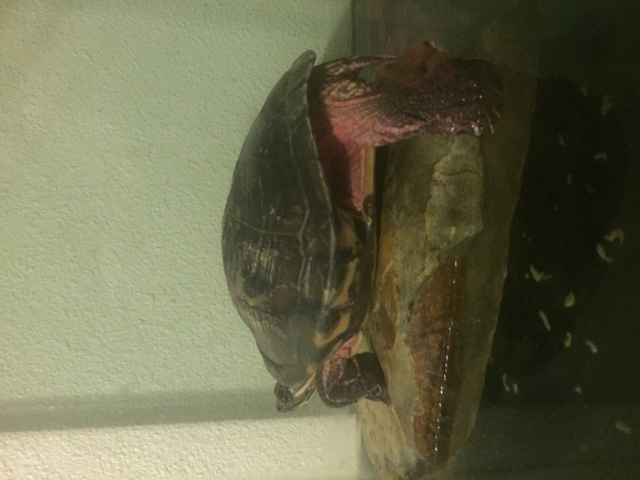 Skin infection
Question
Dudley
I think my 20 year old red ear
Skin infection
Question
Dudley
I think my 20 year old red ear
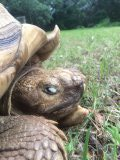 sick spur thigh
Question
Right Left
African Spur Thigh, T
sick spur thigh
Question
Right Left
African Spur Thigh, T
 flakey substance on turtles neck and legs
Question
Red ear slider
red ear slider about 9 mos. 20
flakey substance on turtles neck and legs
Question
Red ear slider
red ear slider about 9 mos. 20
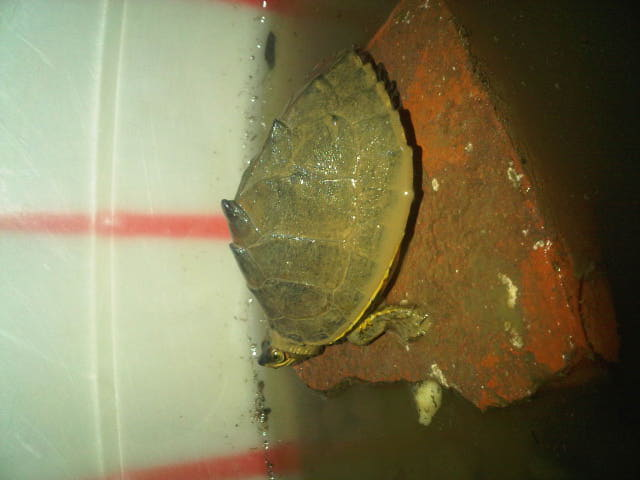 q.
Question
Sir I want to know about this t
q.
Question
Sir I want to know about this t
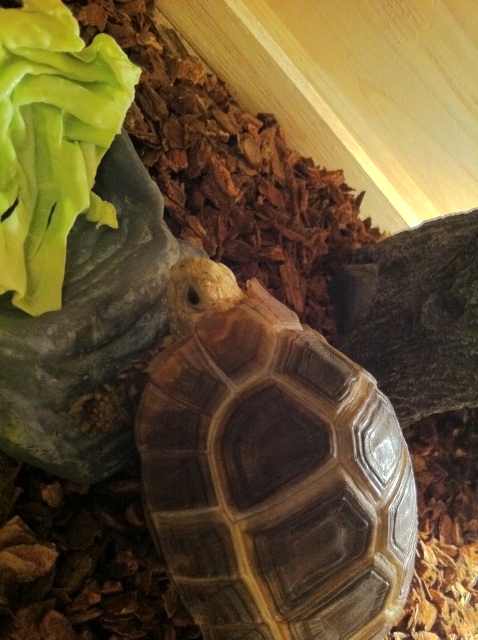 unidentified tortoise
Question
my tortoise (eating)
dear Jamie
i got a torto
unidentified tortoise
Question
my tortoise (eating)
dear Jamie
i got a torto